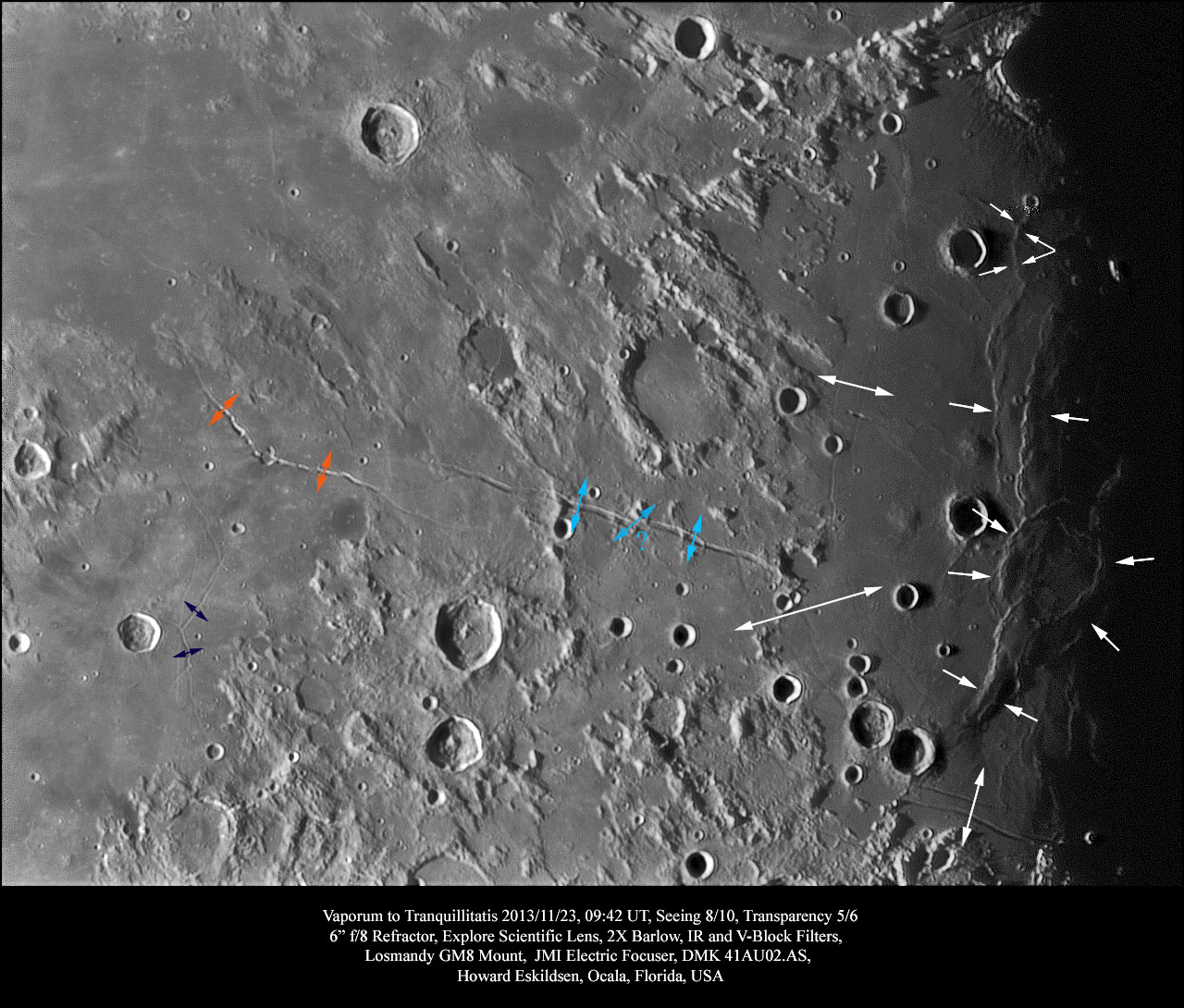December 13, 2013
Faulty Ideas

image by Howard Eskildsen, Ocala, Florida
This image shows various faults and ridges with arrows overlain to suggest the directions forces acted to create them. The faults at left and center appear to have had tension across the surface that split them apart to form the rilles (faults). Perhaps the Ariadaeus rille in the center of the photo had some offset with the area north or the fault slightly displaced eastward relative to the southern area (see angled double arrow with question mark). The right of the image shows complex forces that pulled apart the terrain surrounding Mare Tranquillitatis as the center dropped downward in a synclinal fold. Wrinkle ridges appeared where compression forces within the mare were relieved by overthrust of some of the compressed terrain within the syncline. As for Lamont, the ghostly oval by the terminator, is it truly a buried crater, or could focused forces from the south, west and east have created its circumference?
Howard Eskildsen
Note from CAW: I like the thinking and analysis depicted here. Linear and concentric rilles shown here do form because of pull-apart forces, extensional forces, that may have different origins. Look closely at the Triesnecker Rilles (dark blue arrows) and notice that there are parallel ones nearly side by side - this suggests that the area crossed by those rilles has been uplifted enough to crack the crust. The Hyginus (orange) and Ariadaeus (light blue) rilles are mostly single rilles rather than complex families and may be due to more simple, roughly N-S pull-apart forces, but I don't know what would cause them. The white arrows around the edge of Mare Tranquillitatis are understood to be extension cracks due to bending down as the mare center subsided - there are similar rilles around much of the basin and their forces are radial to the basin center. Mare ridges are considered to be low angle thrust faults formed to accommodate the reduction in available volume as a 3-4 km pile of cooled lava subsides. Lamont is more of a mystery, but it is also a positive gravity anomaly, suggesting that there is an extra mass of dense rocks under it - perhaps an upraised bulge of the mantle if it is actually a buried two-ring basin, as has been suggested.
Related Links
21st Century Atlas chart 12.
Yesterday's LPOD: X Marks the Spot
Tomorrow's LPOD: Tricky Moon, Slow Learner
COMMENTS?
Register, Log in, and join in the comments.



